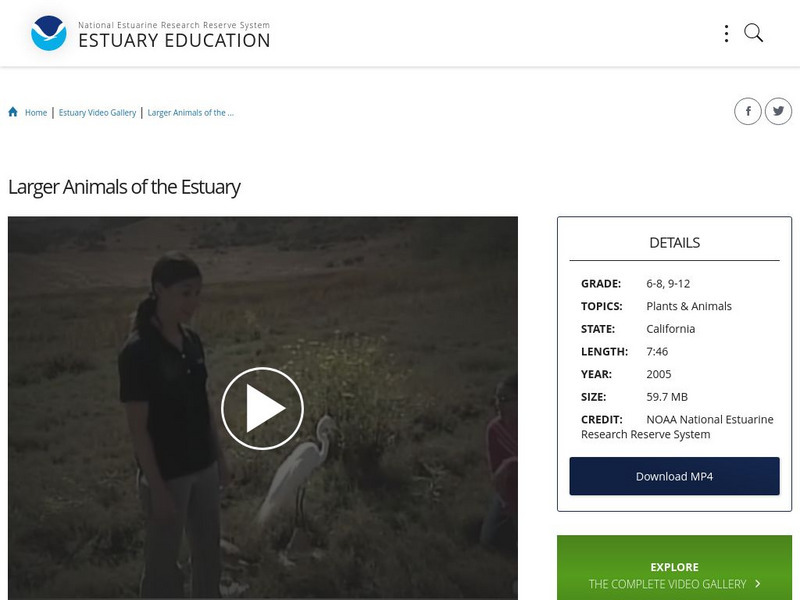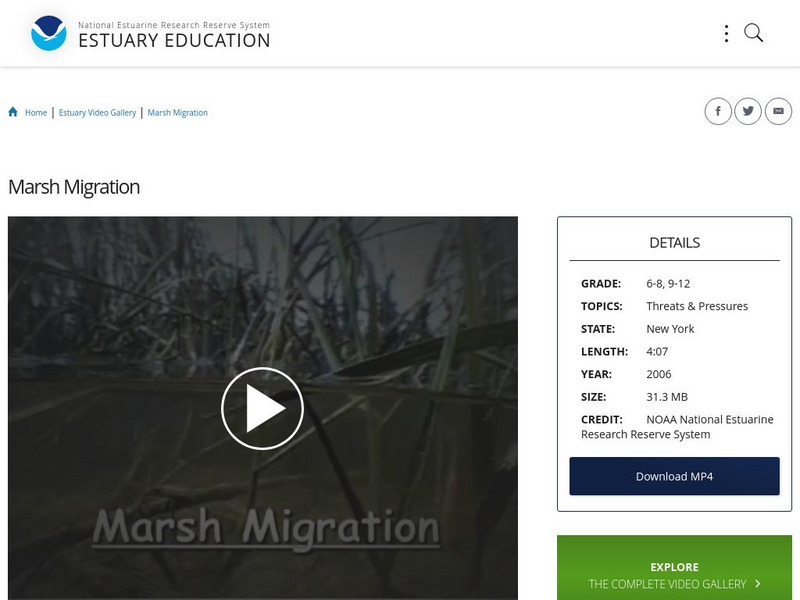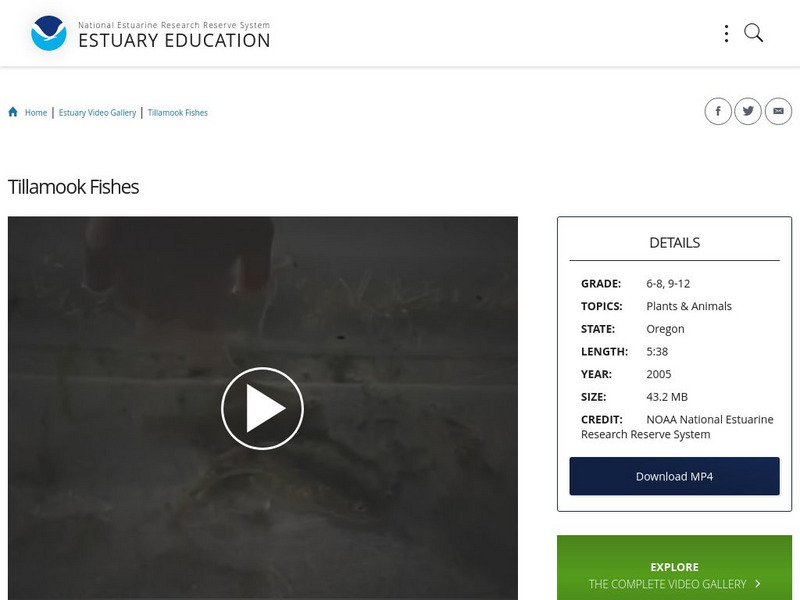NOAA
Noaa: Estuary Education: Plants (Circle of Life)
A segment from the film Waters of Life takes a look at the role of plants in the estuary, and the cycle of life that depends on them. [3:27]
NOAA
Noaa: Estuary Education: Estuary Scavenger Hunt
Follow this group of students through their scavenger hunt in the estuary. Take a look at the living and nonliving things that make this ecosystem a special place. [9:38]
NOAA
Noaa: Estuary Education: China Camp State Park
California's China Camp State Park is an important environmental and historic site which has a natural watershed along the shores of San Francisco Bay. Features in the estuary include an extensive intertidal salt marsh, meadow, and oak...
NOAA
Noaa: Estuary Education: Larger Animals of the Estuary
Join a naturalist who studies the large animals and native birds found in the estuarine areas. Spend the day exploring the San Francisco Bay Estuary with this group of students. [7:46]
NOAA
Noaa: Estuary Education: Marsh Migration
Dr. Alex Kolker shows high school students how a salt marsh can actually migrate across the landscape. He uses fresh core samples taken by students to demonstrate his points. [4:04]
NOAA
Noaa: Estuary Education: Tale of Two Estuaries
A detailed look at the life inside two very different estuaries in Oregon: the South Slough and Tillamook estuaries. [8:04]
NOAA
Noaa: Estuary Education: Tillamook Fishes
Student seine the Tillamook estuary and bring back a variety of native species to study. [5:35]
NOAA
Noaa: Estuary Education: So What Is an Estuary, So Now You Know
Produced by the Association of National Estuary Programs as a fun explanation of what estuaries are and why they are important. [7:23]
NOAA
Noaa: Estuary Education: Black Skimmers
Footage of Black Skimmers fishing on an estuarine creek in North Carolina. This clip shows, in slow motion, how the birds skim from the surface of the water to get their food. [1:03]
NOAA
Noaa: Estuary Education: Estuary Restoration and Monitoring
See how an urban estuary suffering from land loss is restored using a unique high-tech method. Then, using digital camera technology, students are able to show the results of the restoration to determine the project's success. [2:25]









